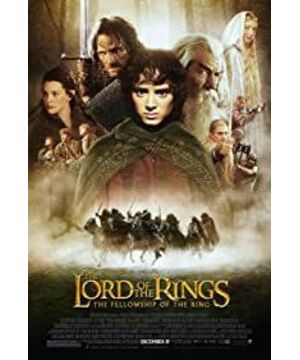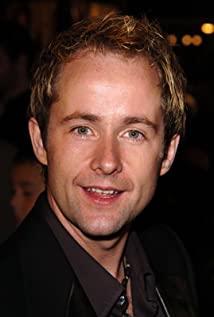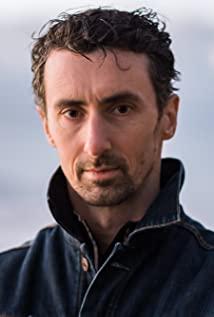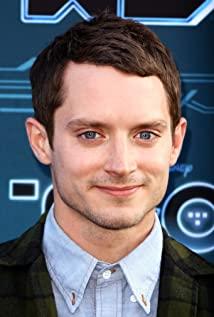Now recalling the first movie he participated in, Richard Taylor would still laugh. It was in 1989, and the fledgling Peter Jackson found Richard Taylor, who was only 24 years old at the time, to participate in the production of "Meet the feebles".
In this puppet film about a hippopotamus leading a group of animal stars on stage, Peter Jackson continues his bad taste in Virgo's "Bad taste," experimenting with every perversion he can think of—muppet peeing, Little white rabbit orgasm, flies eating poop with spoons, and SM, drug use, machine gun shooting...
Richard Taylor is fascinated by the visual processing of these vulgar plots, and he feels the magic of special effects in movies. Local critics in New Zealand slammed the film as far from being a puppet show for normal people, but only for those with strong stomachs and an extremely twisted sense of humor.
Nonetheless, the two men with an "extremely twisted sense of humor" admired each other. Richard was amazed at Peter's crazy imagination, and Peter also raved about Richard's craftsmanship. The two then collaborated on the more shocking Braindead in 1992.
The film about a perverted mother who turns into a zombie to hunt down her daughter-in-law was described by the New York Daily News as "the bloodiest, most perverted, most bizarre and most inhumane movie to date." On the screen, although there are no mature digital special effects yet, Richard used simple models and stop-motion animation technology to create a walking viscera and a huge zombie king...
The difference from "Weak Life" is that in After "The Corpse Played the World", people found some kind of "evil-filled talent" in these two lunatics. The film has also won 16 international film awards and science fiction awards at various film festivals, including the French Avoriaz Film Festival.
The acclaim from the outside world began to make Peter Jackson realize that if he wanted to truly realize his movie dream, he couldn't be indulged in bad taste all the time. At the same time, Richard Taylor's small stunt company, which is good at makeup and model making, is gradually on the verge of bankruptcy. So they decided to form a partnership to form Weta (WETA) company to make truly outstanding films.
It is this decision that created the "New Zealand Twin Towers" that can compete with Industrial Light and Magic Special Effects today.
The magic tower
"WETA" over Hollywood refers to a giant cricket unique to New Zealand. This giant cricket, which can reach 10 cm in length, is the largest insect in New Zealand. However, when Weta was first established, it was extremely "small". An SGI graphics workstation worth 250,000 yuan was considered the company's tangible property. Other than that, only Richard Taylor's craftsmanship remained.
Fortunately, Peter Jackson's film "Sin Angels" (Heavenly Creatures) was once again a huge success. The release of the film was called by film critics as "marking the entry of the film into the era of pre-futurism". The special effects scenes in the film are also impressive: a group of suddenly resurrected clay figurines dance with the protagonist in the warm light.
The film that brought Weta into the world spotlight was undoubtedly The Lord of the Rings. With this huge project brought back to New Zealand by Peter Jackson, Weta's accounts have been flooded with ample cash. Since the preparation of "Lord of the Rings", Weta, the big cricket, has really grown up. Its production team has rapidly increased from more than 40 people to more than 400 people, and the equipment in hand has also increased from one SGI that year to 4400. tower.
At the same time, Peter Jackson and Richard Taylor also discovered that the days when Weta was walking on one leg could not keep up with the demands of production. So they reorganized the company into two: Weta Workshop Ltd., which focuses on crafting, miniatures, and makeup, and Weta Digital Ltd., which focuses on digital technology.
In this veritable "Twin Towers", Peter Jackson is the "brain" responsible for outputting thoughts, and these ideas are transmitted along the nerves to Richard Taylor's "nerve center", which in turn is responsible for directing the "hands" and "Foot" turns whimsy into real images.
The New Zealanders' diligent and down-to-earth work style was quickly reflected. Just to prepare for The Lord of the Rings, Weta spent two and a half years, designed more than 14,000 miniature models, and made them by hand. Nearly 50,000 pieces of armor and weapons... After the movie was released, all those who had been worried that Weta would take on the visual effects duties were completely convinced and shut their mouths.
The total investment of the "Lord of the Rings" trilogy is only 270 million US dollars, which is equivalent to more than 90 million US dollars per episode. Compared with the super blockbusters that cost hundreds of millions of dollars at every turn today, the technology used by Weta in "The Lord of the Rings" is not the most advanced, but it is the most effective and successful.
"The Lord of the Rings" cinematographer Andrew said half-jokingly: "This is the lowest-cost blockbuster film ever made on the planet." The film took Richard Taylor and Peter Jackson seven and a half years to make. , After this movie, Weta has been standing above Hollywood like a magic tower.
Weta's standard
"Avatar" is Weta's latest work, and it is also recognized by the world as the pinnacle of film visual effects so far. It took James Cameron 5 years to build a planet of Pandora, and it took 7 years to make this determination. What made him wait for seven years was the "Gollum" built by Weta. The birth of this virtual character finally convinced James Cameron, who had been silent for many years, that it is no longer a fantasy to appear lifelike Navi people on the screen.
Richard Taylor has always regarded it as an honor to be involved in the production of "Avatar", "On the planet Pandora, the stones are floating, we can all feel, we can believe, and continue this unique journey. Here, the movie is no longer fiction, but becomes real.”
Unprecedented computer technology enables the audience to experience a world that cannot be experienced in real life in a completely virtual way. "One day, you spent a small amount of money, walked into the cinema, felt a visual and spiritual experience, and then walked out of the cinema, not knowing where you were." (Many reports show that after watching "Avatar", many people felt There is such a reaction)
Nowadays, the pursuit of movie experience, with the release of "Avatar", has reached an incomparable level. Richard Taylor describes this as a "renaissance" in filmmaking that "will last for hundreds of years", "in the past 20 years, the need for visual effects has become more pronounced, and the art of filmmaking has begun a new creative life. .”
But there are also worrying practical considerations about the nearly 20-year-old revolution in the film industry, led by visual effects. There is no doubt that the film industry is in a bit of an odd state right now. Not just in Hollywood, but all over the world. Independent distribution companies struggled, and mid-scale films were all but wiped out. The Big Six US distribution companies will only invest in blockbusters they feel comfortable with.
"Visual effects can achieve some grand scenes in a movie theater, but if I watch a movie like this, the most realistic and beautiful scene is when my heart is shocked." Richard Taylor said: "When Jack Kissing under the holy tree with Neytiri, no audience will notice that it's two computer virtual characters."
Filmmakers don't have many tools at their disposal, but people still focus on technology, maybe the film industry It's self-inflicted, "a lot of people use computer imaging as a gimmick, and then blame computer imaging for the poor film quality." Peter Jackson believes that those who focus too much on technology rather than story, in turn, mislead themselves.
The special effects of the film are indeed dazzling, "but without a story, there is no presentation." Richard Taylor told reporters that this is also the most essential criterion for Weta to judge the effect of the film.
For the growth and development of a film and television special effects company, what do you think is the most important, creativity, technology, funding or something else?
Richard Taylor: Good idea, I think. Technology itself is just a way for a company to materialize an idea. Even if you can create the most gorgeous picture, but the lack of a heartfelt, passionate situation, then the audience will not buy it.
"Enthusiastic situation", how to understand this?
Richard Taylor: Taking Avatar as an example, the small team I lead is responsible for researching the Na'vi culture and clothing customs in order to create the Na'vi weapons, habitats and clothing. The audience sees everything on the big screen, and we can't fool the audience. "Scientists" cannot create computer effects that will amaze the audience. The best special effects are not done by technical engineers, but designed by artists.
You say ideas are more important than technology, but I feel that a lot of film investors will be blindsided by the success of "Avatar", and there may be more similar 3D films in the future. Do you have any opinions on this?
Richard Taylor: In our position, we have no right or obligation to share insights with them unless they let us speak our minds. If we felt that a film lacked a good story from the beginning, we might have chosen to leave the project, but we would have certain ethical constraints on this issue.
Are script and subject matter one of the elements of your choice of collaborative projects?
Richard Taylor: The fact that the script is good isn't what we decide to make a movie, it's whether the visuals the script calls for is challenging enough to provide a strong impact on the artistry and other aspects of the story. support. It's a pleasure if your job is hugely challenging.
So how do you capture the audience's taste? Especially when the audience has objections to your design?
Richard Taylor: To make a movie that entertains the masses, you first have to entertain yourself. When you see negative remarks, rumors or make a bad voice in the fan area online, it may distort your vision, so sometimes you can calmly take a non-response way to deal with the rumors, for a creator to It's not easy to say.
Has there been a similar example?
Richard Taylor: At the beginning, many people had doubts about Pandora, including why the beauty's skin was blue. James Cameron solves this problem very well. In some places he makes appropriate adjustments, in some places he is very sure of his judgment, and he knows very well that there is something very, very special about this movie (Avatar).
What do you think of the current development of China's digital industry?
Richard Taylor: People all over the world thought the Lord of the Rings could only be done in Los Angeles, but we proved with a small New Zealand company that it can be done elsewhere. I think it's only a matter of time before Chinese digital production companies win the Oscars, because many Chinese companies are already capable of hiring the best talent in the world, and soon Chinese movie production budgets will be on par with Hollywood movies.
View more about The Lord of the Rings: The Fellowship of the Ring reviews










